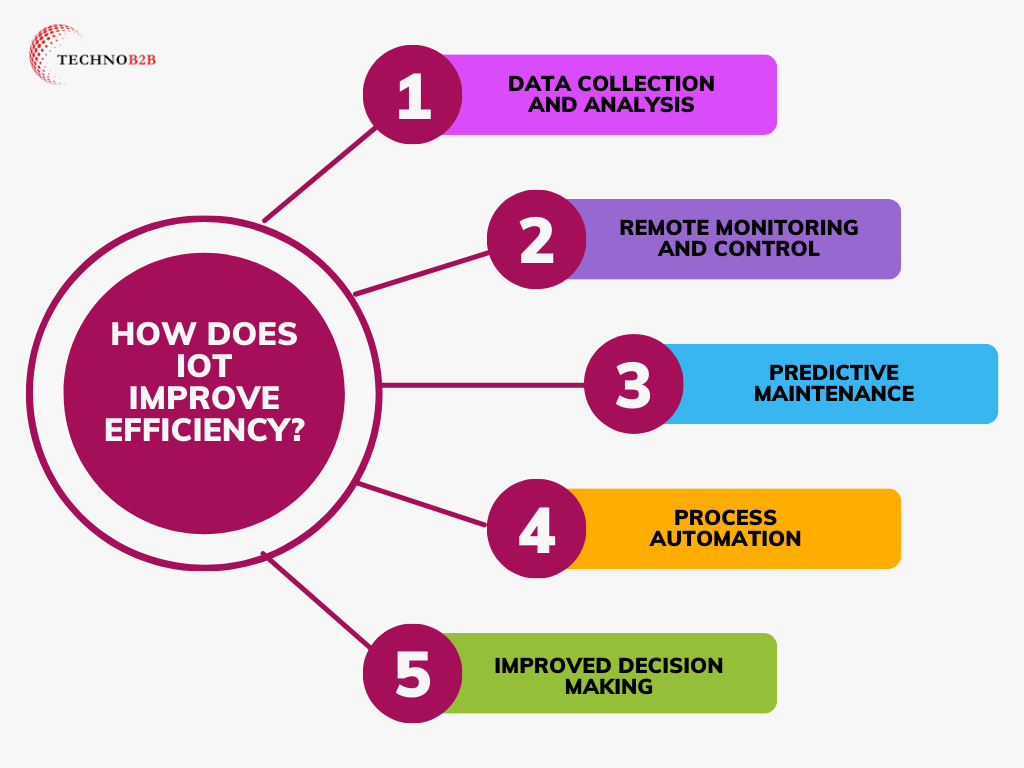How IoT SaaS Solutions Enhance Business Efficiency
Every company relies on business growth to expand its market share by employing high-quality resources. These resources, whether human, material, or operational, are limited yet necessary. With the introduction of IoT, SaaS business growth takes on a new level, as proven by practical uses that improve efficiency.
Given that Industry 4.0 is primarily driven by the Internet of Things, the market’s CAGR of more than 16% over a ten-year period (2018–2028) is not surprising.
Optimization of current resources and innovation through new SaaS business models and services are the two main strategies that comprise company development.
IoT and SaaS transform both approaches, allowing firms to increase productivity by optimizing ROI or providing new services based on previously unavailable technology and data.
Now that we know the importance of IoT and SaaS, let’s know more about them in detail:
What is IoT?
The Internet of Things (IoT) refers to the interconnected network of devices embedded with sensors, software, and other technologies, allowing them to exchange data and communicate with each other over the internet without human intervention. Essentially, IoT enables objects to collect and share information, providing valuable insights and automation in various aspects of life.
For example, in smart homes, IoT devices like thermostats, lights, and security cameras can be connected to a central hub, enabling homeowners to control and monitor them remotely via smartphone apps.
In agriculture, IoT sensors can be used to monitor soil moisture levels, temperature, and humidity, allowing farmers to optimize irrigation and increase crop yields.
In healthcare, wearable IoT devices can track patients’ vital signs and send alerts to healthcare providers in case of emergencies.
Overall, IoT technology has the potential to revolutionize numerous industries by enhancing efficiency, reducing costs, and improving the overall quality of life.
What is SaaS solution?
A Software as a Service (SaaS) solution is a cloud-based software delivery model where users access applications over the internet. Instead of purchasing and installing software locally, users subscribe to the service and access it through a web browser or app.
For example, consider Google Workspace, which offers cloud-based productivity tools like Gmail, Google Drive, and Google Docs. Users can access these tools from any device with an internet connection without needing to install software locally.
Salesforce is a SaaS CRM platform that helps businesses manage customer relationships and sales processes. With Salesforce, companies can track leads, manage customer data, and analyze sales performance—all through a web-based interface.
Another example is Slack, a collaboration platform that enables teams to communicate and collaborate in real-time. Users can share messages, files, and documents, organize conversations into channels, and integrate with other tools—all within the Slack app.
SaaS solutions offer numerous benefits, including flexibility, scalability, and cost-effectiveness. Businesses can leverage these solutions to streamline operations, improve productivity, and stay competitive in today’s digital economy.

How does IoT improve efficiency?
IoT, or the Internet of Things, enhances efficiency by connecting devices and enabling them to communicate, collect, and exchange data.
Here’s how it works:
- Data Collection and Analysis: IoT devices gather data from sensors, machines, and other sources. For example, smart thermostats collect temperature data in buildings.
- Remote Monitoring and Control: IoT allows remote monitoring and control of devices. For instance, farmers can monitor crop conditions and adjust irrigation systems from their smartphones.
- Predictive Maintenance: IoT enables predictive maintenance by analyzing device data to anticipate failures. This prevents costly downtime. An example is monitoring equipment in manufacturing plants.
- Process Automation: IoT automates tasks and processes, saving time and reducing errors. For example, smart lighting systems adjust brightness based on occupancy.
- Improved Decision Making: IoT provides real-time insights for better decision-making. For example, retailers analyze foot traffic data to optimize store layouts.
Businesses can use IoT technology to streamline operations, decrease costs, and boost production, resulting in increased efficiency and market competitiveness.
How do IoT SaaS solutions benefit businesses?
Businesses gain from IoT SaaS solutions because they streamline operations, provide real-time information, save costs, improve customer experience, and give them an upper hand in the market.
Let’s get to know it in detail:
1# Improved Data Management and Analytics
Improved data management and analytics through IoT SaaS solutions revolutionize business operations. These systems collect and analyze vast amounts of data from connected devices, offering valuable insights.
For example, in manufacturing, IoT sensors monitor equipment performance, predicting maintenance needs, optimizing production schedules, and minimize downtime.
2# Enhanced Connectivity and Communication
IoT SaaS solutions boost connection and communication, allowing organizations to simplify operations and collaborate more effectively.
For example, in logistics, IoT-enabled devices track shipments in real time, giving precise position data, optimizing routes, and assuring on-time delivery, therefore increasing customer satisfaction and operational efficiency.
3# Cost Efficiency and Scalability
Businesses gain significantly from IoT SaaS solutions in terms of cost-effectiveness and scalability.
For example, businesses can sign up for cloud-based IoT services rather of spending money on expensive equipment. This methodology enables them to increase resources as needed, lowering upfront costs and increasing flexibility to meet shifting demands.
4# Automation and Streamlining of Processes
Automation and process efficiency are key benefits of IoT SaaS solutions for enterprises. Consider a manufacturing operation that uses IoT sensors to monitor equipment performance.
These sensors provide real-time data to a SaaS platform, allowing for proactive maintenance and reduced downtime. This automation streamlines production processes and increases overall efficiency.
5# Real-time Monitoring and Decision Making
Real-time monitoring and decision-making are essential components of IoT SaaS solutions, benefiting businesses across various industries.
For example, in agriculture, IoT sensors gather data on soil moisture levels and crop health. This data is transmitted to a SaaS platform, allowing farmers to make immediate decisions regarding irrigation and fertilization, resulting in improved crop yields and resource utilization.
Similarly, in healthcare, wearable devices collect patient vital signs in real-time, transmitting this information to healthcare providers via SaaS platforms.
Healthcare professionals can then promptly assess patient conditions and make informed treatment decisions, enhancing patient care outcomes.
How does IoT contribute to improving efficiency and decision making in businesses?
IoT, or the Internet of Things, plays a crucial role in enhancing efficiency and decision-making processes across businesses.
For example,
In manufacturing, IoT sensors installed on machinery collect real-time data on equipment performance and production metrics. This data is transmitted to a centralized platform, where it is analyzed to identify potential maintenance issues or production bottlenecks. With this information, managers can make informed decisions to optimize production schedules, reduce downtime, and improve overall efficiency.
In retail, IoT-enabled smart shelves equipped with sensors automatically monitor inventory levels and track product movements. This real-time inventory data is integrated into inventory management systems, allowing retailers to accurately forecast demand, minimize stockouts, and optimize product placement.
By using IoT technology, businesses can streamline their operations, reduce costs, and enhance customer satisfaction through improved inventory management and product availability.
In transportation and logistics, IoT devices installed on vehicles enable real-time tracking of shipments and monitoring of vehicle performance. This data is transmitted to fleet management systems, providing logistics managers with visibility into delivery routes, fuel consumption, and driver behavior.
Using this information, businesses can optimize delivery routes, reduce fuel costs, and assure timely deliveries, eventually enhancing operational efficiency and customer happiness.
Overall, IoT technology empowers businesses to collect and analyze vast amounts of data in real time, enabling them to make data-driven decisions that drive efficiency, enhance productivity, and optimize resource utilization across various sectors.
Conclusion
IoT SaaS solutions provide organizations with a valuable tool for increasing productivity across a variety of sectors.
Companies may use IoT technology to improve data management, increase connections, cut costs, automate operations, and make real-time decisions.
These innovations eventually lead to more simplified processes, enhanced productivity, and increased customer satisfaction, resulting in overall corporate success.


